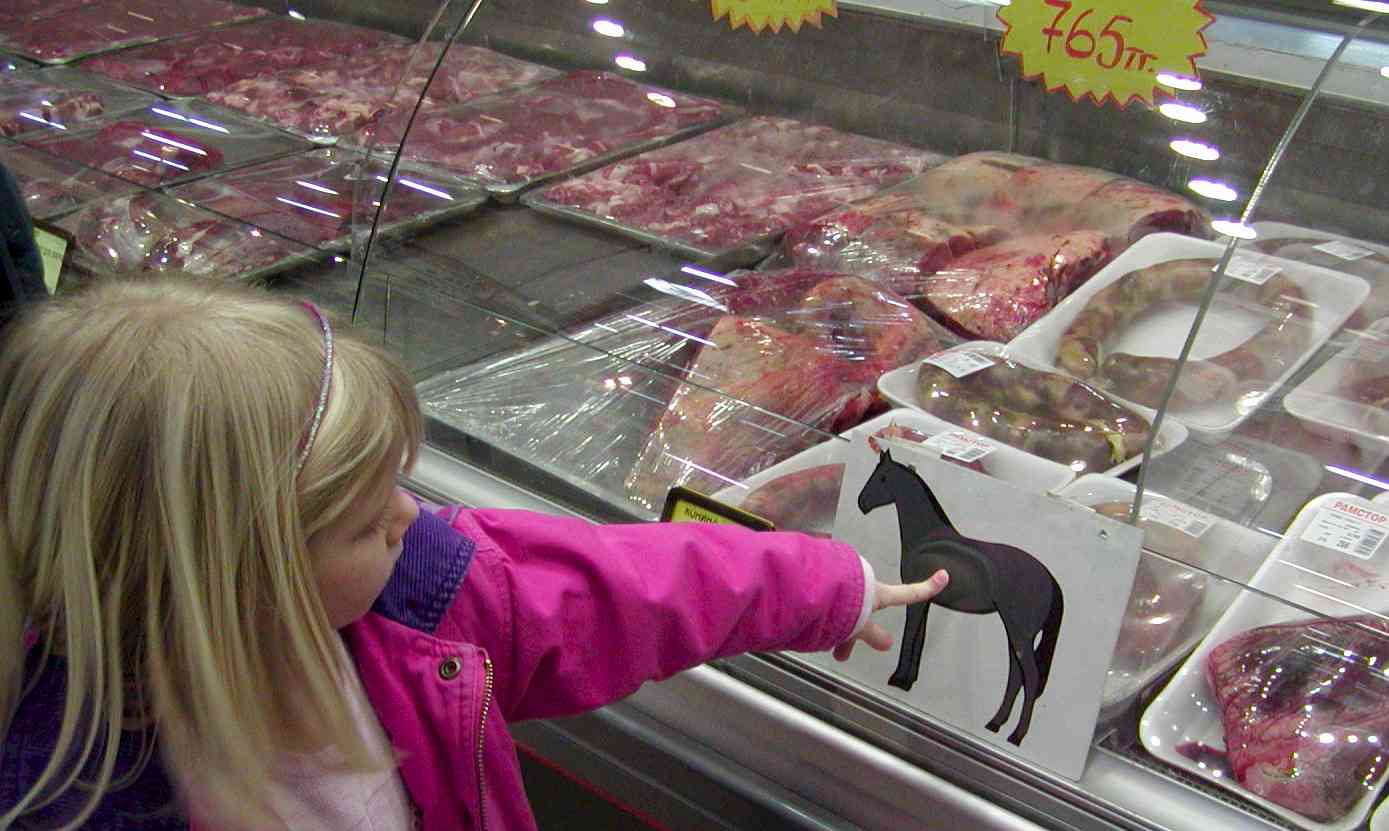Canada was settled by French and other European explorers by canoe – hence the Canadianism, as stated by Pierre Berton, a Canadian journalist and novelist,
 "A Canadian is someone who knows how to make love in a canoe without tipping it."
"A Canadian is someone who knows how to make love in a canoe without tipping it."
The National Post reports this morning that for the second time in four years, health authorities in France have identified an outbreak of the parasitical illness trichinosis from bear meat devoured by French travelers in northern Canada.
The grizzly that ended up as steaks, stew and even "grizzly-bear Bolognese" had been threatening an Inuit camp on the Nunavut shore when it was shot by rangers, with the carcass later divided up among locals and visitors.
In 2005, 19 French travelers got sick after eating black bear in Labrador, while two others caught trichinosis from a polar bear in Greenland a few years earlier.
A Paris-based expert who investigated the outbreaks attributes the spate of bear-meat illness among his compatriots to the French culinary penchant for trying unconventional meats, and either eating them raw or cooking them very little.
One of the French adventurers — on a sailing trip across the Arctic — ended up hospitalized for 11 days after digesting the tainted food in September, though she avoided the most serious heart and brain complications of the infection.
Dr. Jean Dupouy-Camet, head of a trichinosis-tracking program, said in an interview from Paris,
"It’s quite fascinating to see that French people seem quite fond of bear meat. French people travelling abroad like to consume exotic meats … [And] they are usually fond of raw meat: steak tartare."
But the latest episode was not confined to the French sailors. Members of another North-West Passage sailing expedition, headed by a Canadian, ate some of the same meat and two of them also became ill.
Other people have had witty things to say about Canada. British novelist Douglas Adams said each country was like a particular type of person, and "Canada is like an intelligent 35 year old woman." America, on the other hand, is a "belligerent adolescent boy" and Australia is "Jack Nicholson." I may prefer Australia.

 We’ve both sired offspring in the past year-and-a-bit, so the issue of listeria and pregnant women has been a recurring theme – on
We’ve both sired offspring in the past year-and-a-bit, so the issue of listeria and pregnant women has been a recurring theme – on .jpeg) When estimates are extrapolated from data in tests on laboratory animals, the results showed "Listeriosis is likely occurring from exposure to lower doses than previously estimated," Smith said.
When estimates are extrapolated from data in tests on laboratory animals, the results showed "Listeriosis is likely occurring from exposure to lower doses than previously estimated," Smith said.
 Some of us submit our opinions to cat scratching peer review, take our lumps and get better.
Some of us submit our opinions to cat scratching peer review, take our lumps and get better. As consumers, we are inundated by media “fear-mongering,” and made to believe that with each meal consumed, we draw closer to the precipice of some fathomless tragedy. We are also taught to be suspicious and wary of the people who have dedicated their lives to ensuring that our families are fed, and that our food is wholesome.
As consumers, we are inundated by media “fear-mongering,” and made to believe that with each meal consumed, we draw closer to the precipice of some fathomless tragedy. We are also taught to be suspicious and wary of the people who have dedicated their lives to ensuring that our families are fed, and that our food is wholesome. Alcoholica Mare’s Milk
Alcoholica Mare’s Milk Even though we live in central Manhattan (Kansas), there’s a small greenbelt behind the house and we’ve had visitors such as deer, turkeys, and yesterday, a fox.
Even though we live in central Manhattan (Kansas), there’s a small greenbelt behind the house and we’ve had visitors such as deer, turkeys, and yesterday, a fox. I was in love.
I was in love.(1).jpg) Pete Nelson , who spent 35 years running a USDA-inspected facility, defended the multiple sourcing used by large processing plants. He cited the need for a steady supply of beef in case an individual slaughterhouse is not able to deliver on time, as well as the need for a variety of meats to ensure consistency. …
Pete Nelson , who spent 35 years running a USDA-inspected facility, defended the multiple sourcing used by large processing plants. He cited the need for a steady supply of beef in case an individual slaughterhouse is not able to deliver on time, as well as the need for a variety of meats to ensure consistency. … I know he misses me because he can’t find reliable goaltending – and the faculty team hasn’t won the annual tournament since my shattered nerves backstopped the team to victory in 2005, despite Naylor’s total lack of defense.
I know he misses me because he can’t find reliable goaltending – and the faculty team hasn’t won the annual tournament since my shattered nerves backstopped the team to victory in 2005, despite Naylor’s total lack of defense. 

 The existing members of the girls’ varsity soccer team at a high school in Lewiston, New York thought they would say hello and congratulations by
The existing members of the girls’ varsity soccer team at a high school in Lewiston, New York thought they would say hello and congratulations by